Housing Histories, Lima
Spring 2020
Columbia University, GSAPP
Critic / Anna Puigjaner
Collaborator / Andrew Keung
︎
The dawn of Lima’s modern housing history is another cliché of twentieth-century human civilization - this is a tale of deficit and development out of crisis and desperation. With the world swooning after neoliberal ideals and western lifestyles, under the presidency of architect Fernando Belaúnde Terry, Lima was brewing formalized colonies that spread within sharp geometric lines. The onset of the crisis and subsequent housing development followed the tracks of most third-world emerging capitals and metropolitans, but this soon rerouted into an alternate trajectory, one with nuances and ideals of open-work architecture and grassroot urbanism.
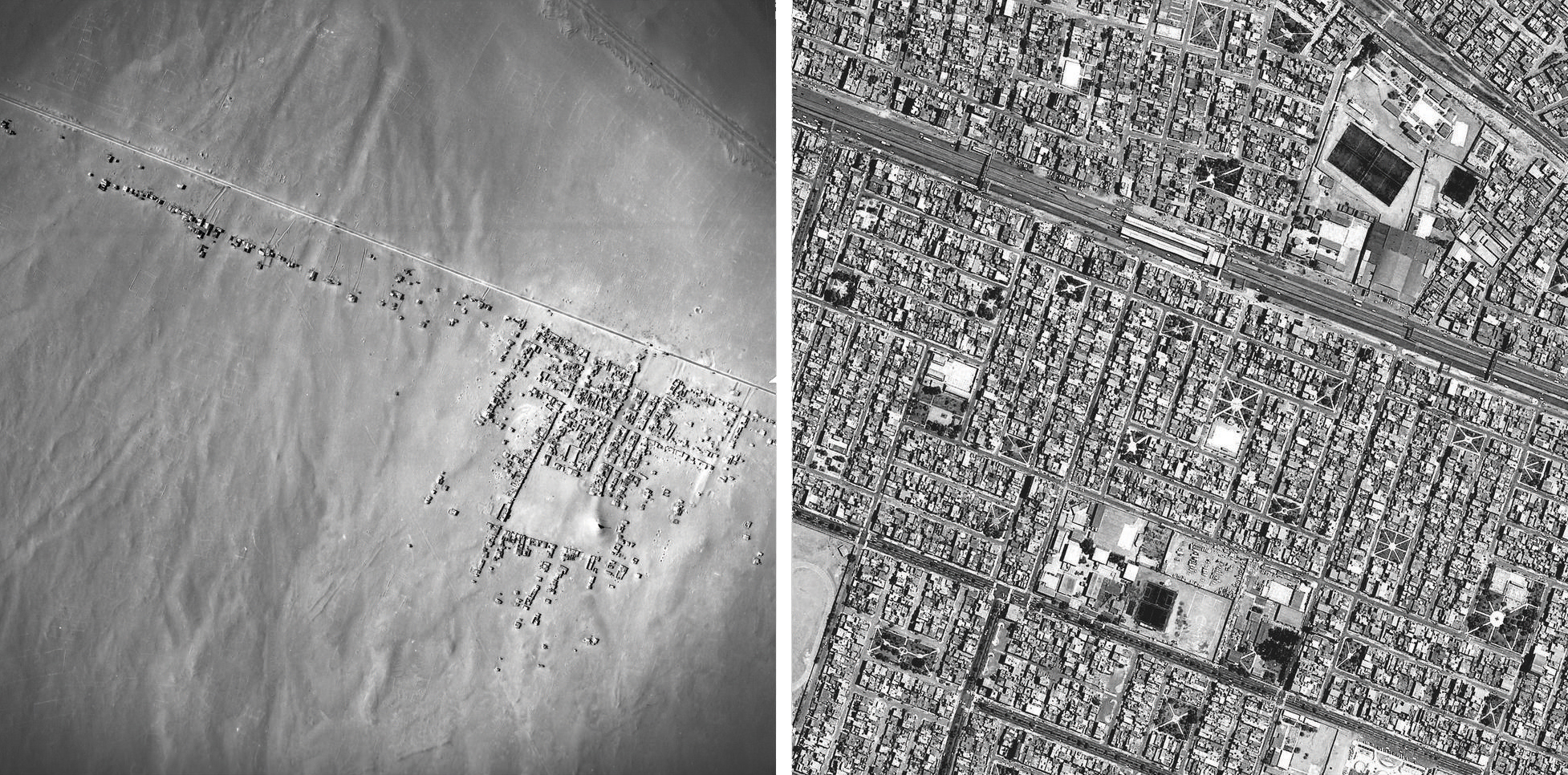 images / Before and after comparison of Ciudad de Dios, south of Lima, 55 years later (1955-2010) (source: Servicio Aerofotográfico Nacional)
images / Before and after comparison of Ciudad de Dios, south of Lima, 55 years later (1955-2010) (source: Servicio Aerofotográfico Nacional)
Influx breeds the informal (denial and anger)
As with many other Latin American nations, Peru in the 1940s experienced an immigration downpour from its rural communities into Lima. Situated in a third world environment, the Peruvian government was unable to satiate the need for basic amenities and facilities in the countryside and rural areas. Peru battled an epidemic of underdeveloped infrastructure, lack of education and healthcare, a dearth of jobs, and mass poverty. The move to the nation’s capital came from the search for economic opportunity and essential civic amenities. Lima’s population grew from 60,000 to 3,420,000 from 1940 to 1972, recording an almost 500% increase. This large influx of residents resulted in a housing crisis as the government struggled to find the capital to house all new residents. Lima witnessed squatter settlements sprouting in the heart and the periphery. The first were the tugurios1 situated in the historic city centers among old Spanish colonial buildings, subdivided much past their capacities, creating pockets of inner-city slums. The barriadas, the other kind, were squatter settlements in the peripheries, consisting of makeshift and meager dwelling units in earth and thatch built by the inhabitants themselves. These peripheral areas were primarily hilly and arid, and lacked basic amenities for modern-day human civilization including water, sanitation, electricity, up to education, and healthcare.
Responding to the population spike and “informal” chaos of squatter settlements, President Belaúnde instituted the Housing Plan for Lima in 1945, which planned to execute formal public housing developments called unidad vecinales (unit neighborhoods). These were rational and affordable housing projects looking to eradicate squatter settlements and promote a western domestic aspiration. Unfortunately, due to the high cost and friction against western lifestyles, these vecinales were met with much resentment by the migrant population. Neither most had the financial means to buy or rent in the city nor did they want to relinquish the freedom of ownership and live as tenants to the State. The desperation to have a roof and the disobedience to abdicate ownership incited the invasion movement where migrants self-organized and built modest and unplanned settlements, growing the city North, East, and Southwards. Ironically, the Government realized that encouraging invasion settlements by continuing to build vecinales could collectively prove to be a faster solution to overcoming the housing crisis. Symmetrically opposite in origin and ownership but identical in intent, the construction of the first unidad vecinale and invasion settlement materialized simultaneously in 1946.2
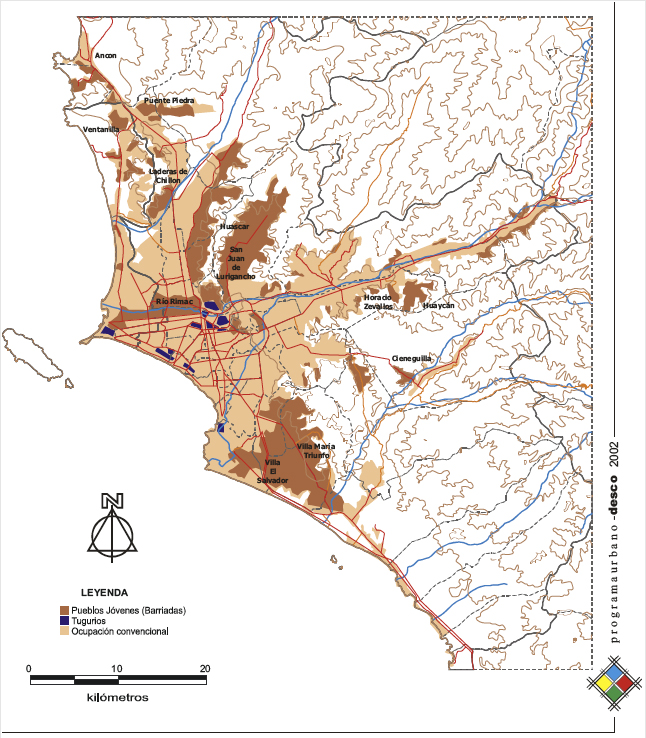
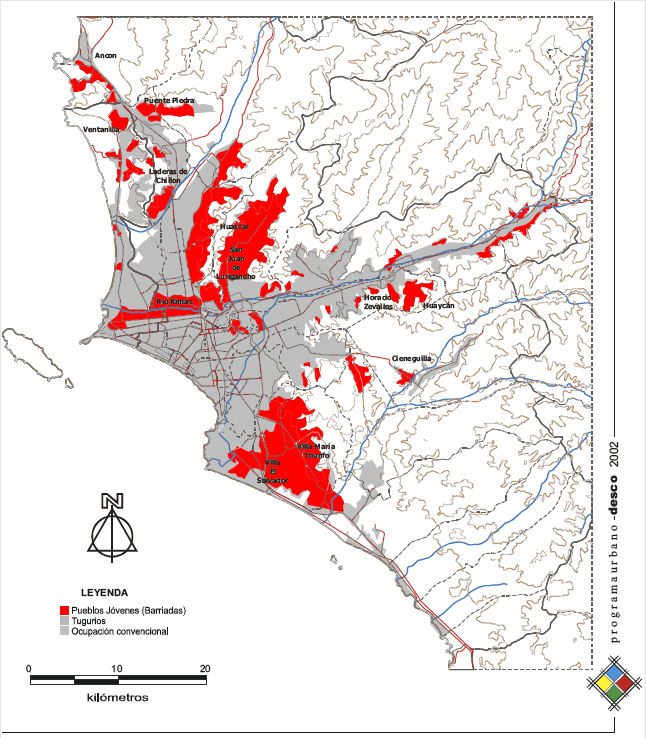
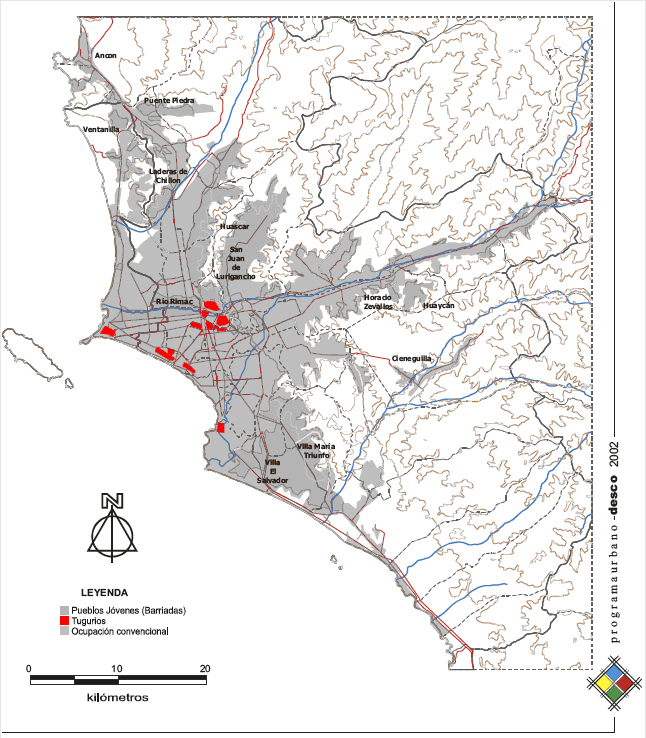

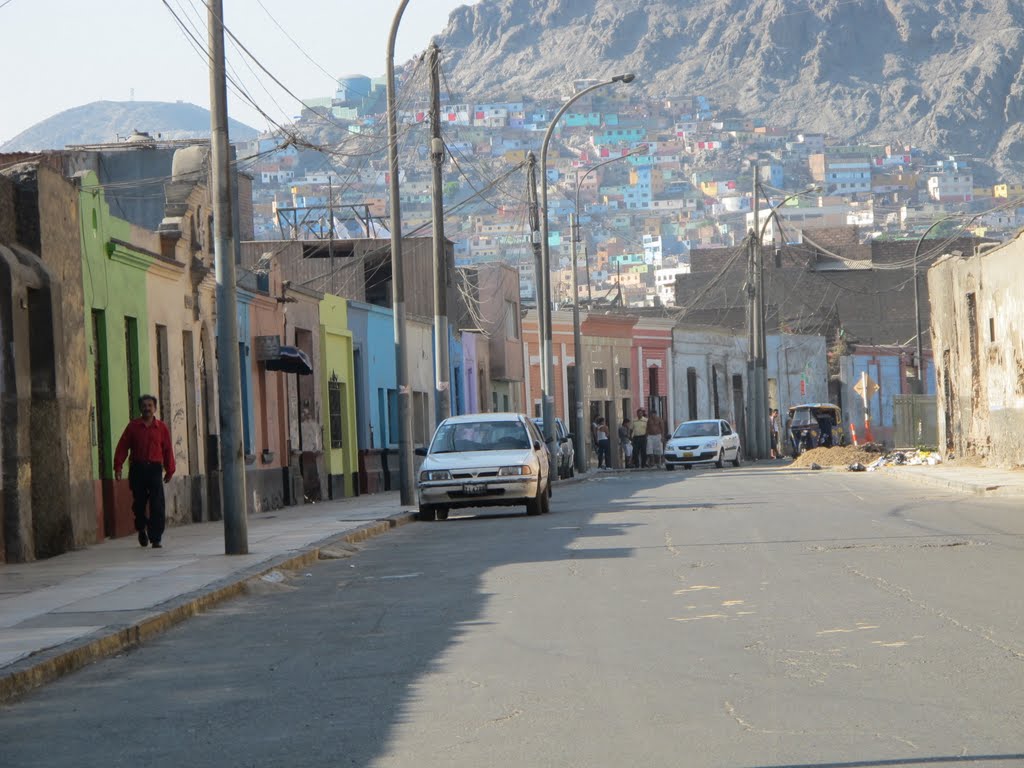


Third world alternative
Let us take a contrasting situation. Around the same time, after independence in 1947, the capital city of Delhi experienced an influx and steady surge of migrants from neighboring cities, states, and refugees from present-day Pakistan. Delhi grew tremendously over the next decades with squatter settlements arising in the North, South, and East, outside the historic (walled) city and administrative center. The number of immigrants in both political capitals (Delhi and Lima) were comparable, both cities had adjacency to water bodies, and the economic condition of Delhi was superior to that of Peruvian immigrants.
Unfortunately, Delhi took a more obvious turn than Lima. Housing in Delhi always remained as a formal (State and private) establishment with complete control of the political center in the eradication of squatter settlements. Migrants in Delhi succumbed to pressures of desperation, and individual families chose to emancipate from communal milieu to achieve domestic security. The government simply followed western (i.e. modern) lifestyle and architectural ideals propagated by architects and planners invited by Prime Minister Jawaharlal Nehru. Projects took years to achieve completion, in the meantime slums developing around the river and city peripherals worsened in hygiene and safety, leading to two water-borne epidemics, unmanageable waste collection, pollution of the river that Indians, primarily Hindus, consider religious.
In contrast, Lima displayed a unique persistence of communal needs and interests and social vernacular. The unit of social institution did not limit to the family scale and grew broader, right up the urban collective. Modernity was openly aspired for but never propagated as the isolated answer to modern day problems and crises. Even in utter impoverishment, the immigrants found unity in desperation and the desire for ownership to continue expanding Lima North, South, and Eastward with informal and unplanned settlements. From this, the contest for housing development between the government and the people eventually evolved into a self-built “open-work” housing system that became the defining motif for housing in Lima.
Bargaining
In the 1950s, the Corporacion Nacional de Vivienda (CNV, National housing Corporation) found itself struggling to meet housing requirements as thousands of families continuously entered and squatted in Lima.3 Having already displayed acceptance of informal settlements out of desperation, the housing industry aligned to transform these settlements from a metropolitan malignancy to acceptable and formalized colonies. These unconsciously dawned arenas of collective benefit, formal-informal syncopation, and architectural and urban forms of “open-work”. The Comision de la Reforma Agraria y Vivienda (CRAV, Commission for Agrarian Reform and Housing, 1956-1958) concluded with the barriadas being the ideal urban model for the immigrant poor in Lima and promoted the sites and services strategy (lotes y servicios). Here the State worked alongside self-help developments by formalizing them through relocation into planned lots or plots, establishing a network of roadways and sidewalks, and plugging them into the city’s infrastructural systems (water, electricity, waste disposal, gas, etc.). Additionally, learning from the irregular prevailing self-help dwellings, the CRAV established the vivienda elemental (elemental house), an existenzminimum dwelling unit supplied with basic services (power and water) and plugged them into the road and pedestrian networks. Due to the government’s economic incompetency, the elemental house provided for the bare minimum but allowed room for self-help growth with the economic burden resting on the owner’s financial capability. It re-engineered open-work freedom to support a dearth of State funding.
 plan / sites and services strategy (source:
https://www.sciencedirect.com/science/article/pii/S1877705811048740)
plan / sites and services strategy (source:
https://www.sciencedirect.com/science/article/pii/S1877705811048740)


plan, elevation, diagram / spatial expansion and vertical growth of self-help dwellings (source:
https://www.sciencedirect.com/science/article/pii/S1877705811048740)
elevation / family expansion, vertical growth and material improvement of self-help dwellings (Source: Arq. Jorge Burg Bartra)
Formal depression
Following the sites and services strategy, the CNV and CRAV under Belaúnde’s architectural background invited multiple notable urbanists and academics such as John Turner and William Mangin to Peru. Their study of the urban, cultural, and social fabric led to the conclusion that barriadas were the ones to learn from and the ones to be preserved and developed.
That the mass of the urban poor in cities like Lima are able to seek and find improvement through home ownership […] when they are still very poor by modern standards is certainly the main reason for their optimism. […] The intense dialogue that takes place between the squatters planning and invasion, and the continuing dialogue of its development and administration are, with rare exceptions, totally lacking in the modern housing process.4
In awe of the social and collective resilience, international/western academia felt that these dwellers were best in understanding what they needed at a grassroot level, and by allowing a decentralized sense of agency established a unique dialogue with the State to understand problems and inadequacies and subsequently plan to provide for them. In addition, sharing economic responsibilities between the owners and the state allowed the latter to spread funds more evenly and the former to expand only when needed.
Acceptance
In 1961 Belaúnde passed Act 13517, the Squatter Settlement Law, legalizing barriadas and establishing a policy for their improvement. The barriadas were no longer an outmoded vernacular but settlement of every day, the common folk, and the popular typology. This opened up formal-informal negotiations - a conversation of top-down planning and bottom-up expansion, and experiments of open-work. Focusing on barriada transformation instead of eradication, the sites and services strategy continued, and between 1960 and 1980, the peripheral areas experienced experiments in formal housing projects that followed barriada idiosyncrasies. Cuidad De Dios and Ciudad Satelite De Ventanilla were pilot projects addressing theories of social infrastructure, extreme pedestrianization, and satellite cities. In 1968, along with the United Nations Development Program, Belaúnde opened the experimentation to global minds through Proyecto Experimental De Vivienda (PREVI-Lima)]. This was an open competition with thirteen domestic and thirteen international architects and practices to design the ideal settlement. Though never completed, the project remained a collaboration of 24 ideas and brought forward the system of community clusters to foster social vernacular and public collectivization. Following this, projects such as Comunidad Urbana Autogestionaria El Salvador (CUAVES) and Performa Especial Huaycan (PEH) redesigned communal networks through urban voids for institutional, commercial, healthcare and recreational programming planned with local agency.






images / PREVI-Lima - public space and aerial view of settlement
images / El Salvador - street view and aerial view of settlement
images / Huaycan - street corner and aerial view of settlement
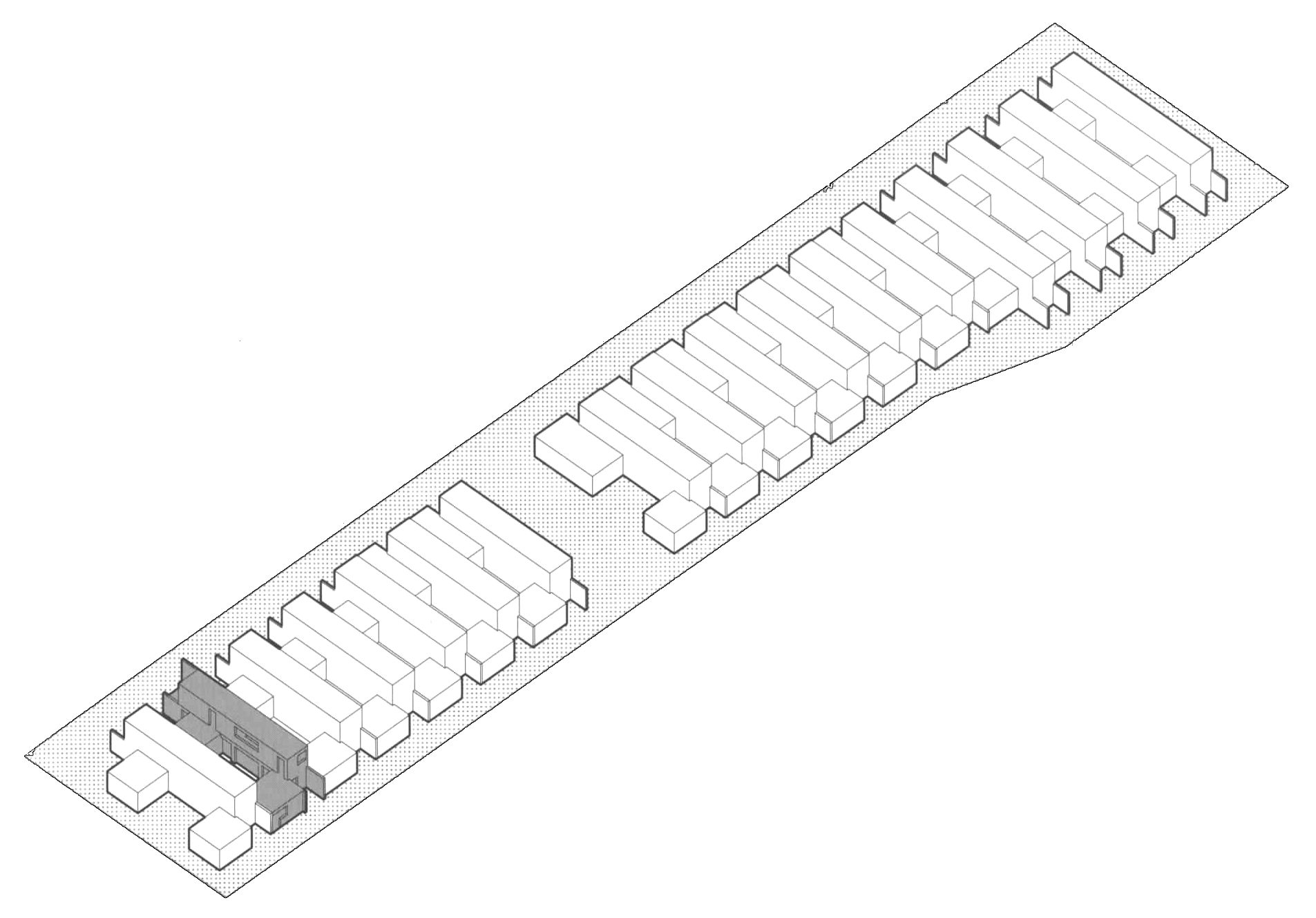

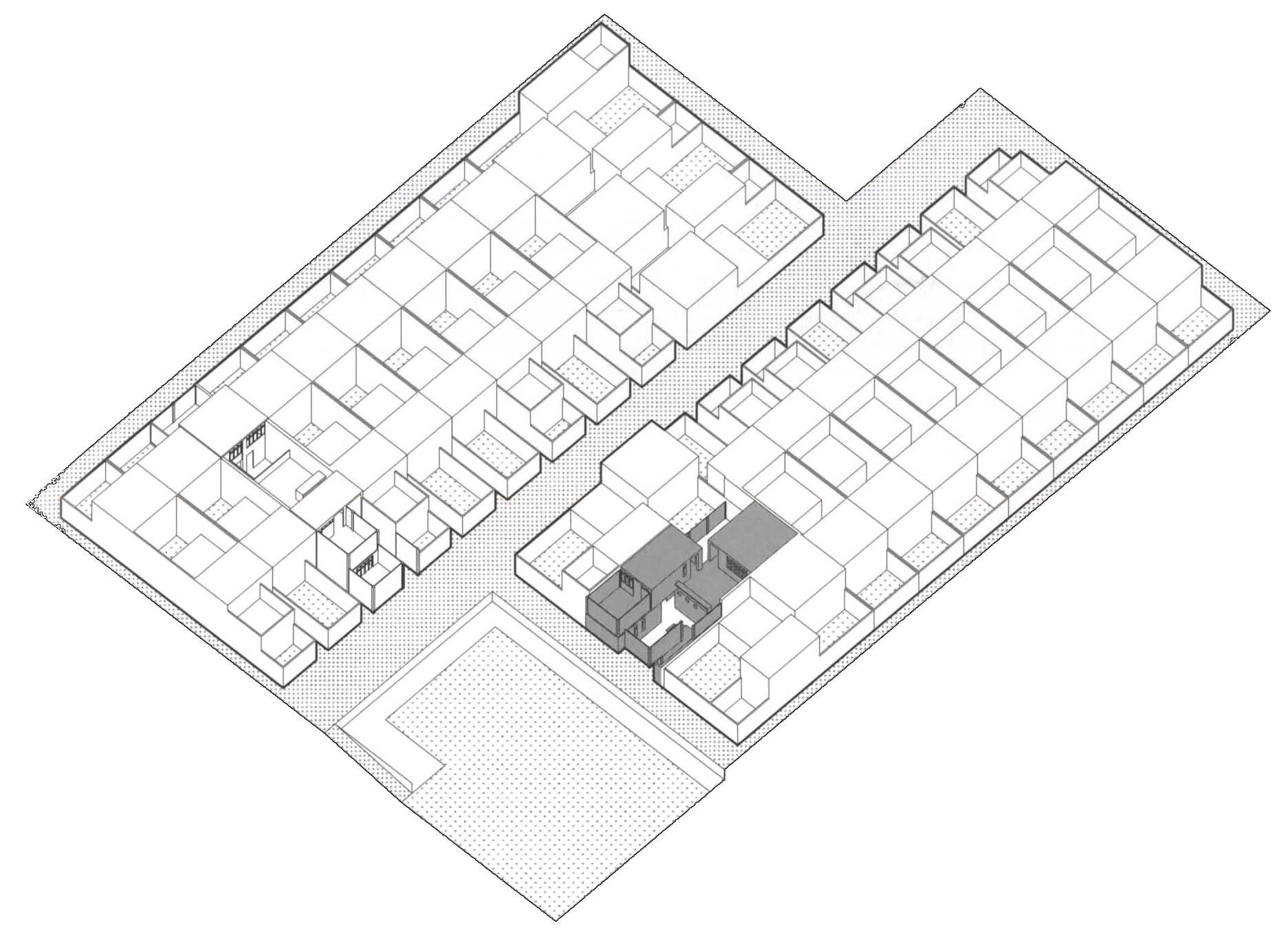

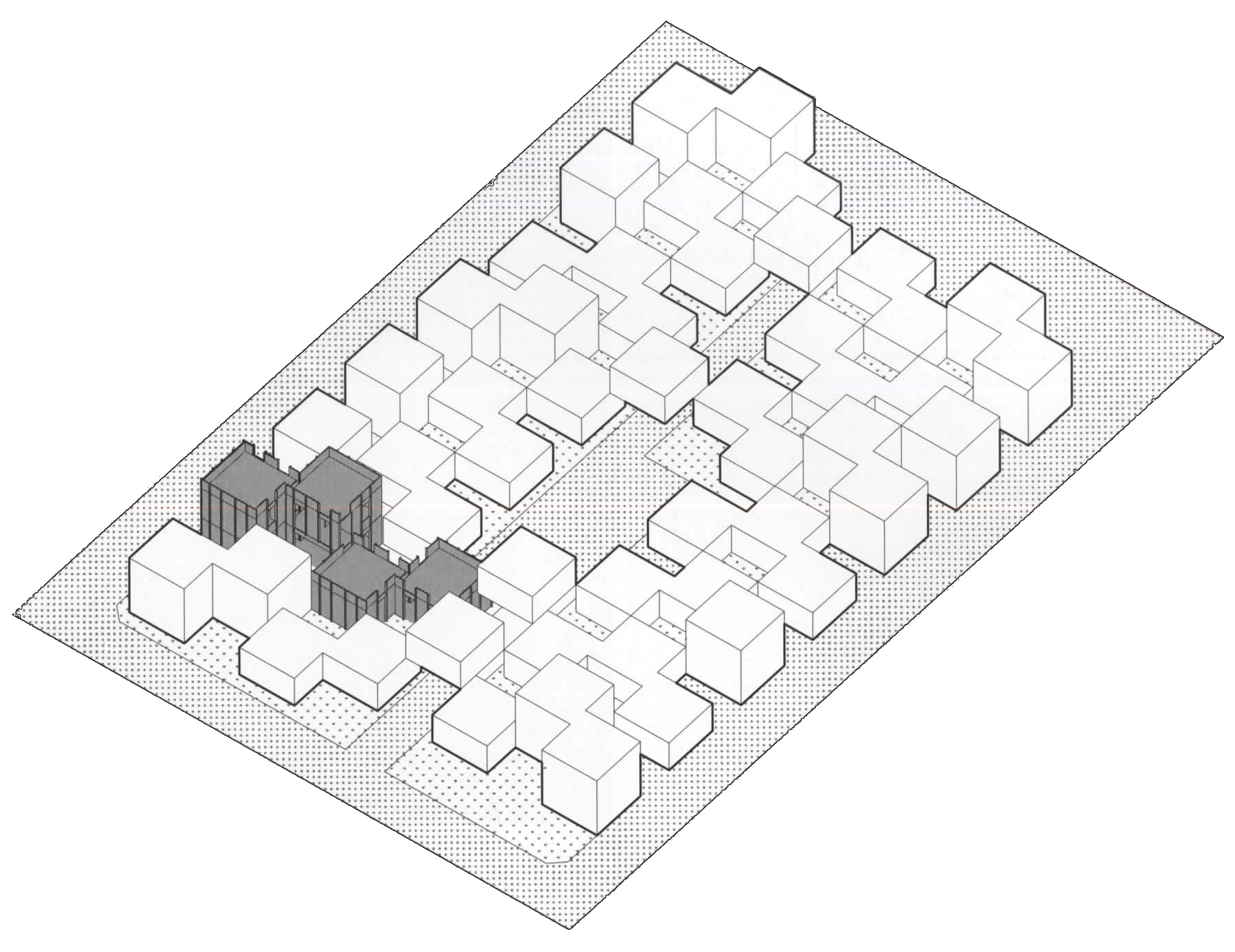

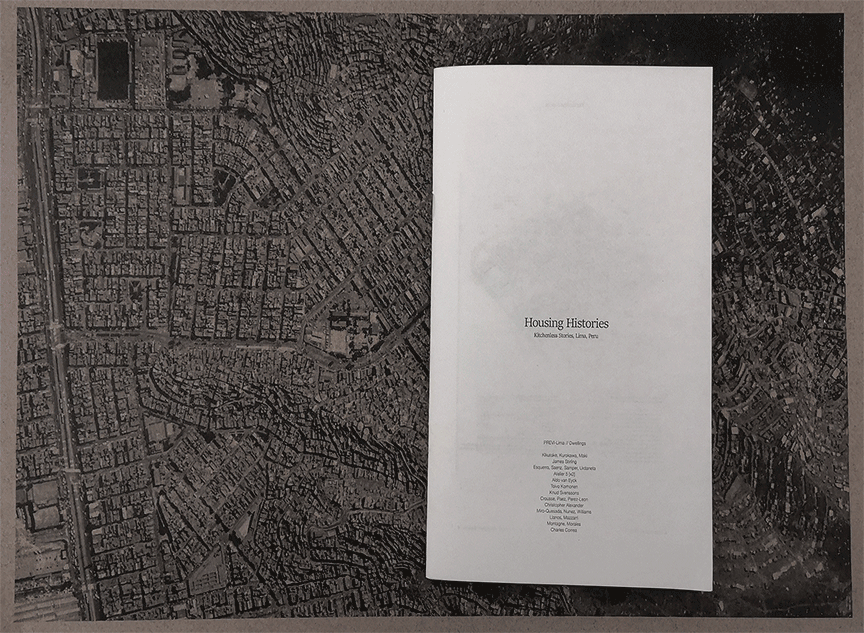
Ownership
Post-1980, Lima began experiencing stagnation in experimentation and development under constant political instabilities and erratic change of ideologies. Until 1995, aligning with Squatter Settlement Law, taking from 10 to 20 years, settlers in early barriadas eventually attained land titles to their homes. Under Hernando de Soto Polar’s influence, the policies of Alberto Fujimori changed from a Keynesian to a neoliberal approach.5 Post-1995, aiming to legalize extra-legals by inserting them into the mainstream economy, Peru underwent a reformation of the method and criteria for awarding land titles, resulting in over 1.2 million land titles awarded to families residing in barriadas. Eligibility was simple, squatters needed only to establish that they had lived in their residences before 1996. However, the present ownership situation of barriadas is far more complex. Protected by the constitution, new dwellings, though technically illegal since 2004 because of dangerous construction and nature preservation efforts, generally have no action taken against them if they have been built for over 24 hours. Additionally, ownership is being harnessed by new political parties as a means to draw votes among new settlers. Inadequate funds and a lack of intent are neglecting peripheral settlements, causing stagnation of urban development and housing strategies, and widening economic hierarchies.
Lima’s housing history experienced an alternate trajectory. The paradigm shift from questioning the existence of barriadas, to how barriadas can exist, incited a rapid time of experimentation of open-work. Challenging western urban sterility, these experiments have displayed the semi-preservation of local flavors, economies, and social structures. Following the five stages of grief instead of constant compromise under crisis, Lima’s open work gradient was the fruition of modest state funding, international recommendations, a praiseworthy collective resilience, and a popular aspiration for ownership.
 collage / housing histories and informal settlements, Lima
collage / housing histories and informal settlements, LimaWhat is visible is the trajectory rejoining the cult of neoliberalism which is at an impasse, and may well be terminal.6 With land pre-established as a commodified resource, experimentation for the sake of welfare is eclipsed by profit-making, splitting society into the haves and have nots. The latter is caught in a limbo of underdevelopment and neglect with dubious ownership statuses.
What is the next step in these negotiations? With the bottom-up restricted to self-help dwellings and mediocre urban decisions, can formal systems be re-engineered to provide greater informal agency and allow the bottom-up to support the State’s inadequate funds and unconscious intent? Can new scales and typologies of open-work be explored to limit top-down order and foster the barriadas’ innate social and vernacular piquancy?
×
References
1 _ Henry Dietz, “Urban Squatter Settlements in Peru: A Case History and Analysis,” Journal of Inter-American Studies 11, no. 3 (1969): pp. 353-370)
2 _ Sharif Kahatt, “Urbanity as a Project of Modernization. Urban Design and Progressive Housing Strategies in Lima, 1954-1984,” Clara N° 4, no. 1 (2017): pp. 103-126)
3 _ Sharif Kahatt, “Urbanity as a Project of Modernization. Urban Design and Progressive Housing Strategies in Lima, 1954-1984,” Clara N° 4, no. 1 (2017): pp. 103-126)
4 _ Turner F. C. John, “The Squatter Settlement: An Architecture That Works,” Architectural Design, no. 38 (1968): pp. 357-360)
5 _ “Hernando De Soto Polar,” Wikipedia (Wikimedia Foundation), accessed March 5, 2020, https://en.wikipedia.org/wiki/Hernando_de_Soto_Polar)
6 _ Dimitris Papaioannou et al., “On the Commons: A Public Interview with Massimo De Angelis and Stavros Stavrides,” An Architektur - On the Commons, no. 23 (July 2010), https://www.e-flux.com/journal/17/67351/on-the-commons-a-public-interview-with-massimo-de-angelis-and-stavros-stavrides/)
︎